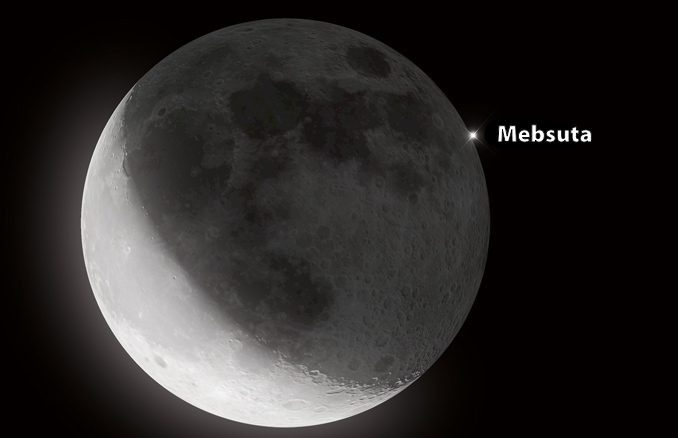Watching a bright star disappearing or reappearing from occultation behind the Moon’s limb is always an exciting observation to make. If you’ve not yet seen this happen then back-to-back events involving two of the brightest stars to be occulted this year, provide good opportunities for you to break your duck.

On 1/2 September (Wednesday evening/Thursday morning), Mebsuta (epsilon Geminorum) takes centre stage, reappearing at the Moon’s dark limb. On the following night, 2/3 September (Thursday evening/Friday morning), it’s the turn of kappa Geminorum in the spotlight when you can observe both its disappearance and reappearance. All you need to enjoy both events is a humble pair of 10 x 50 binoculars, find yourself an observing location with a clear view of the horizon from the north-east around to the east and not mind losing a bit of sleep.
In the early hours of 2 September, the Moon is a waning, 24.5-day-old crescent when it rises in Gemini at about 12.30am BST. At between about 1.08am and 1.18am BST (later timings occur progressively further north), the Moon blots out magnitude +2.9 Mebsuta at the bright lunar limb, though this may prove tough to see as the pair are at a lowly altitude of between four and eight degrees (the Moon appears higher in the sky the further north you go). Just under an hour later, at between 2.00am and 02.11am BST, Mebsuta peeks out from behind the Moon’s dark limb. By this time our satellite has climbed to between around eight and thirteen degrees.

Next morning, on 3 September, magnitude +3.5 kappa Geminorum disappears at the Moon’s bright limb between 3.37am and 3.47am BST, with the Moon lying at a much more favourable altitude of between 13 and 18 degrees. About an hour later, at between 4.41am and 4.47am BST, kappa emerges at the Moon’s dark limb at an altitude of between 21 and 26 degrees.
